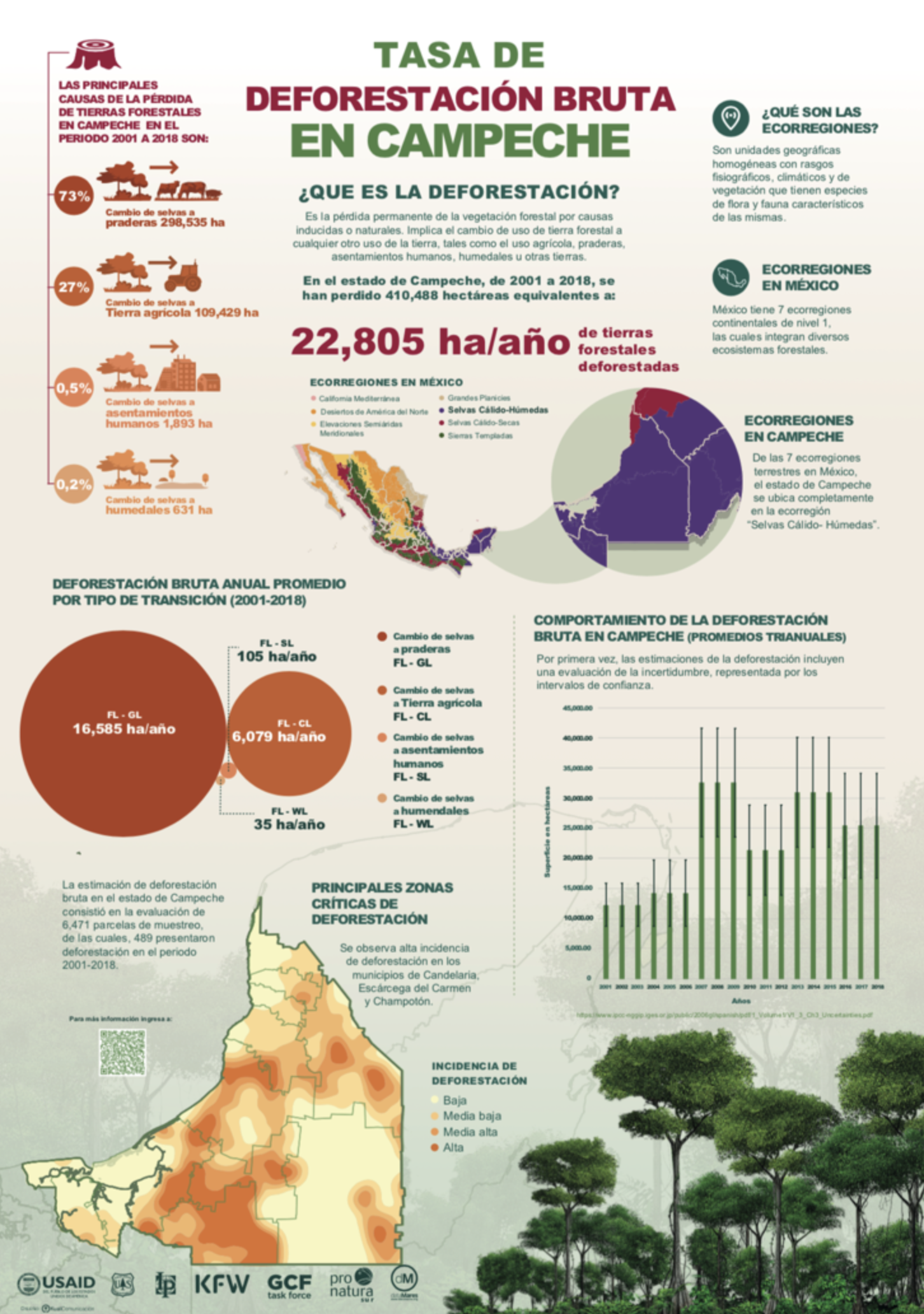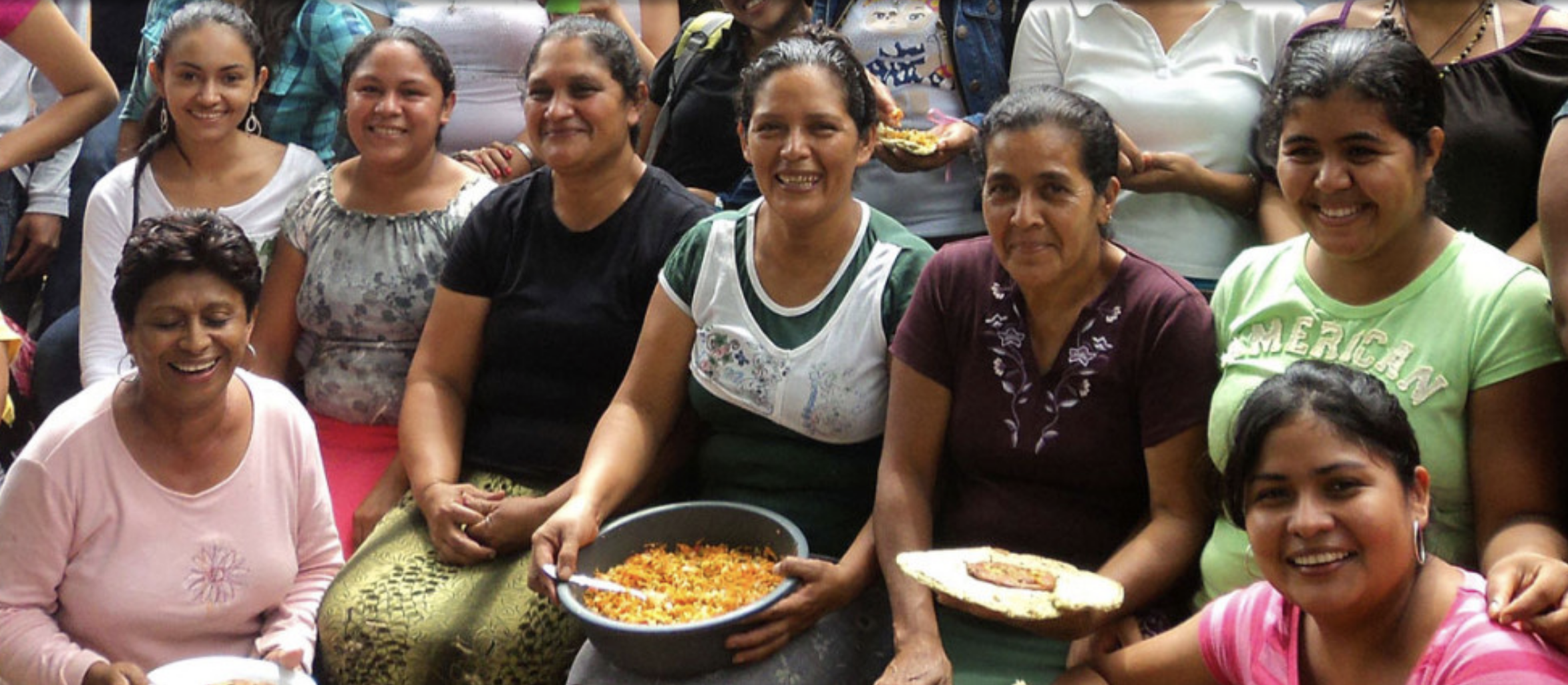This project was presented to the Ministry of Finance to participate in the call to obtain funds from The Gef
Project location:
State of Campeche, Mexico
Located southeast Mexico, occupies 2.9% of the national territory. Warm climate - subhumid, temperature of 26 C and precipitation of 1100 mm per year. It has 11 municipalities and 5,420 localities and a population of 458,655 women and 441,276 men; of which 12% speak an indigenous language.50.5% of the population is in poverty levels and 12% in extreme poverty. 19.2% have an educational gap and 21% do not have access to health. 33.4% do not have basic services and 26.1% do not have access to nutritious and quality food. (1)
- 1% of the population is dedicated to the primary sector. Hence 69.3% agriculture, 22% livestock and 8.7% fishing. Agricultural, forestry and livestock activities present low levels of productivity, training and little technology transfer. 86% of the population is dedicated to the secondary sector, of which 60% are paid subordinate workers and 40% are employed in micro-businesses.
- 21% of the population of Campeche lives in rural areas, these 200 thousand people are the target audience and beneficiaries of the project.
- 74.9% of the state surface is land for agriculture, cultivated forests and pastures, aquaculture, urban areas. Only 25% remains in its natural form. (2)
- In the last 20 years, 8,000 square kilometers of forest have been lost, a fifth of the state's tree cover. (3) It is estimated that up to 2,805 hectares of forest land are deforested each year: 73% changed from forests to grasslands, 27% changed land for agriculture, the rest for human settlements and wetlands. High incidence of deforestation in the areas of Candelaria, Escárcega and Champotón.(4) (Annex map)
- Campeche has the highest rate of deforestation in the country. Government programs in favor of the environment are mainly dedicated to solving drinking water and sanitation problems. The Secretariat of the Environment, Biodiversity, Climate Change and Energy of Campeche (SEMABICCE) was created to promote and apply mechanisms that ensure the restoration and conservation of natural resources, and ensure universal access to efficient and clean energy; Through programs and public policies, the Government promotes sustainability initiatives in the state, and expresses its commitment to these issues.
- In addition to its oil importance, which contributes up to 4% of the national GDP, Campeche is of great strategic importance for the country, new ports, agricultural and tourist projects should be drivers of economic development for the state and rid of the ballast that affects to the rest of the country, the economic lag of the Mexican southeast.
1 - Coneval 2 - Inegi 3 - Global Forest Watch 4 - Conafor
Project description and objectives
Considerations:
- Almost a million people live in the State of Campeche, 50% of whom live in poverty and 12% in extreme poverty.
- The State of Campeche is the national leader in deforestation with the loss of 3,000 hectares of forest per year.
- 99% of deforestation is caused to carry out agricultural or livestock activities.
- Mexico imported 17 million tons of yellow corn for $6 billion usd in 2022. Most of that grain is used as animal feed.
Brosimum Alicastrum
The Ramón (Brosimum alicastrum) is an abundant endemic forest species in the tropical forests of southeastern Mexico. It is a generous tree in branches and leaves. With enormous potential to regenerate forests in the Yucatan Peninsula (CICY).
Ramón branches are used as a forage source to feed production animals, such as ruminants, pigs, horses and chickens. The forage has 14% crude protein, 3.9% ether extract or fat, 13% ash or minerals and 39% crude fiber. (1)
The seeds of the Ramón tree are a food alternative for production animals and humans. Numerous studies certify the high nutritional values and medicinal properties; contains high content of protein, vitamin C, B6, B2, E, folic acid, zinc and iron; outperforms products major commercial importance such as corn, wheat and rice. It contains more tryptophan than corn, eggs, soybeans, wheat, oats, rice, peanuts, and milk. (3)
The trees produce fruit twice a year. They can produce up to 160 kg of seeds per year. In a plantation frame of 5 x 5 meters, this is equivalent to harvesting 80 tons per hectare per year; 10 times more than what was obtained per hectare of corn in Mexico - 2021. (2)
The cultivation of ramón does not require rich soils, nor fertilizers, nor pesticides; It grows abundantly on rocky and sloping soils, and tolerates dry seasons. It requires irrigation for the first two years of life, reaches maturity at 4 years and can live for more than 150 years.
The ramonales provide invaluable environmental services. Evergreen tree over 30 meters tall, evergreen foliage with a great capacity to absorb pollutants from the atmosphere. Its large size provides food and shelter for the local fauna; It has large and deep roots that allow it to withstand meteorological phenomena.
Objectives
- Produce and plant 5 million Brosimum Alicastrum in the State of Campeche
- Create two main programs:
- Brosimum Alicastrum in your house
- In the case of houses, education about the benefits of having these trees in patios, sidewalks, parks and avenues. Goal: 800 towns with 100 000 habitants.
- Brosimum Alicastrum in your parcel
- In the case of parcels, advice and implementation to carry out the plantation. Goal: 2000 hectares of land
- Implement a Cooperative Society with all the members of the community for the collection and sale of the seed.
- Implement a State Collection Center with the infrastructure to store, distribute and manage the sale of seed that the community achieves.
- Training program for women, for the use of fodder for animals and seed for the production of ramón flour and coffee.

Continuar leyendo

